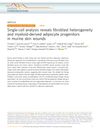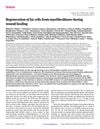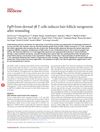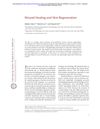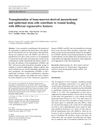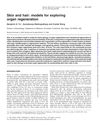Single-Cell Transcriptomic Analysis of Small and Large Wounds Reveals the Distinct Spatial Organization of Regenerative Fibroblasts
November 2020
in “
Experimental Dermatology
”
fibroblast lineages wound healing hair follicle regeneration single-cell RNA sequencing scRNA-seq upper wound fibroblasts Crabp1 murine papillary fibroblasts differentiation trajectories dermal papilla wound periphery regenerative abilities spatial organization lineage origins regenerative dermal papilla fibroblasts hair regeneration papillary fibroblasts differentiation paths wound edge regenerative potential spatial arrangement
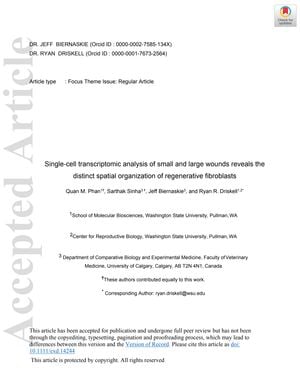
TLDR Different types of skin cells are organized in a special way in large wounds to help with healing and hair growth.
The study by Phan et al. analyzed the role of fibroblast lineages in wound healing and hair follicle regeneration using single-cell RNA sequencing (scRNA-seq). The researchers compared fibroblasts from small scarring wounds to those from large regenerative wounds in mice. They discovered that upper wound fibroblasts, which express Crabp1 and share a gene signature with murine papillary fibroblasts, are crucial for hair follicle regeneration. These fibroblasts showed different differentiation trajectories, with upper populations being closely associated with the specialized dermal papilla. The study also found that fibroblasts at the wound periphery might have regenerative abilities similar to those at the center. The findings suggest that the spatial organization of fibroblasts in large wounds is important for regeneration and that further research is needed to understand the lineage origins of regenerative dermal papilla. The study was supported by grants and scholarships, and the data is available at https://skinregeneration.org/.


